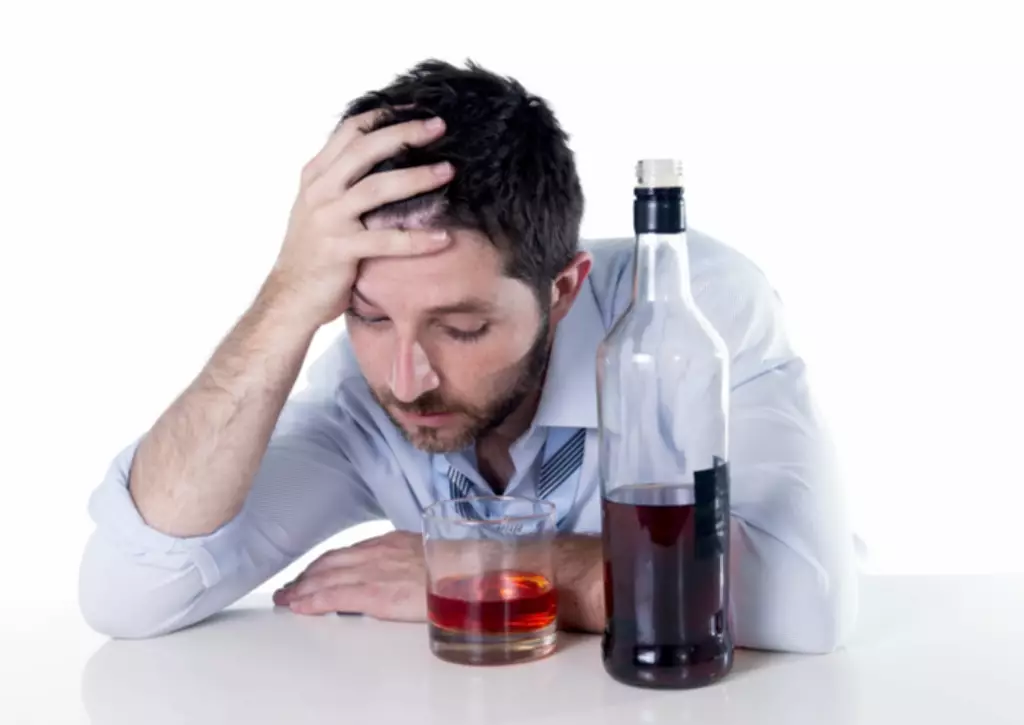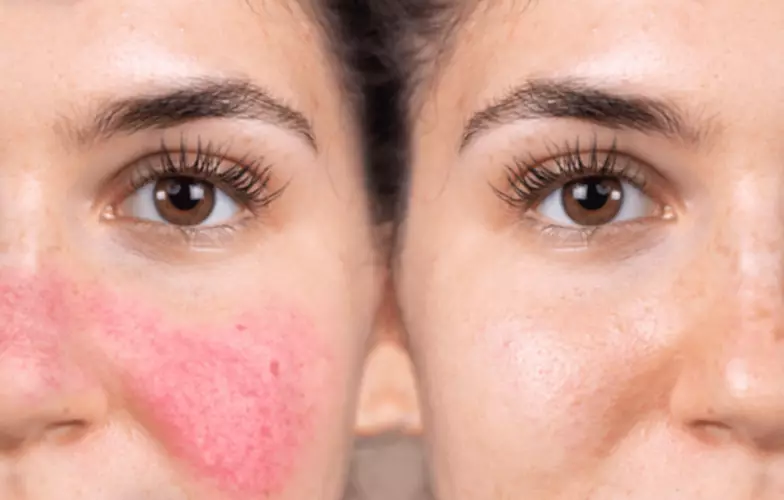Category: Sober living
Current anti-doping measures rely primarily upon the punishment of athletes who use performance-enhancing drugs. The effectiveness of this is hotly debated, given that many athletes still use these drugs despite the potential consequences. It is important for athletes who use drugs in sports to seek help as soon as possible, as a drug https://ecosoberhouse.com/ test for athletes is a regular occurrence, and one random test could severely affect their reputation. The danger here is that an athlete may not want to wait several weeks, or even months, to get back to their sport. Instead, they may continue using the opioids so they can handle the pain they’d otherwise be facing during games.

My girlfriend’s got two kids we live with, seven and five, I told them last night what this interview was about. And a guy by the name of Jeff Novitsky contacted me, and I was forced to come in and tell the truth in front of a grand jury. And I didn’t want to tell the truth, I really didn’t, I felt like I was 10 years too late to tell the truth.
What has been the reaction from other athletes?
GW1516 never made it through pre-clinical trials because it consistently caused cancer. Although the long-term effects of SARMs are still unknown, side effects may start with hair loss and acne. More serious health consequences have also been documented, including liver toxicity, as liver enzymes rise, and drops in good cholesterol, which can affect heart health. If this stress continues, SARMs have the potential to increase the risk of heart attack and stroke. It is unclear what will be the final outcome of doping war, but new questions and issues constantly present new challenges for both groups. For example, how each side will respond and adjust when unexpected outside forces – such as the current Covid-19 pandemic that has led to the postponement of World and Olympic level events – upset the tug of war.
- I didn’t know if I could die from that, and sure enough, from the research that I’ve found out, that, yeah, it could have been really bad.
- This is primarily done through a system of testing biological samples from athletes collected both in and out of competition times and then banning athletes who test positive for doping.
- Johnson had won the 100m in a world record of 9.79 seconds but was stripped of his gold medal, external after the positive test and sent home in disgrace.
- One of the most commonly abused performance-enhancing drugs, testosterone, comes with a wide range of immediate and long-term side effects.
- But efforts to help those most affected participate in — and profit from — the legal marijuana sector have been halting.
There are health risks involved in taking them and they are banned by sports’ governing bodies. Bryce Holden, who is the promoter of the Tyson-Paul fight, was the promoter for the Diaz-Paul fight. He declined to say whether there would be a contract with VADA or any drug testing beyond what the TDLR conducts. But Holden did address Tyson’s well-documented use of marijuana and it being on the list of banned substances in Texas.
Should Performance-Enhancing Drugs and Technologies Be Allowed in Sports?
It does not affect the actual mental anxiety but takes care of the physical manifestations. Side effects of these drugs include dizziness, cold extremities, insomnia, heart failure, and liver abnormalities. Athletes take human growth hormone, also called somatotropin, to build more muscle and do better https://ecosoberhouse.com/article/drug-use-in-sports-risks-you-have-to-know/ at their sports. But studies don’t clearly prove that human growth hormone boosts strength or helps people exercise longer. These doses are much higher than those that health care providers use for medical reasons. These drugs might lower the damage that happens to muscles during a hard workout.
One supplement that’s popular with athletes is called creatine monohydrate. The body turns andro into the hormone testosterone and a form of the hormone estrogen. “There is a zero tolerance to the abuse of doping in my sport and I will maintain that to the very highest level of vigilance,” he said. Coe, who has been a strong defender of the IAAF’s record, has pledged to set up an independent anti-doping agency for the sport, admitting there is a perception that in-house drug-testing creates “conflicts” and “loopholes”.
Even for the astute family physician, it can be difficult to identify patients who are using performance-enhancing drugs. Performance and image enhancing drugs (PIEDs) are substances taken by people with the intention of changing their physical appearance and to enhance their sporting performance. Using drugs to improve performance in sport may lead to an athlete being banned and may also harm their health.
The IOC took the initiative and convened the First World Conference on Doping in Sport in Lausanne in February 1999. Following the proposal of the Conference, the World Anti-Doping Agency (WADA) was established later in 1999. Over the past 150 years, no sport has had more high-profile doping allegations than cycling.16 However, few sports have been without athletes found to be doping. In this section, we will attempt to present some of the current data looking at TMS, tCDS in addiction treatment in an effort to project the positive prospects onto athletes due to a lack of data presently available related to athletes specifically. It is important to relay that none of these studies presently look at athletes but this review attempts to lay out some data to support further evaluating such treatments in this distinct population.
Performance Enhancing Drugs
Stimulants are drugs that act on the central nervous system by speeding up physical processes. It can mean increased heart rate and blood flow and elevated body temperature. Drug abuse in athletes covers both legal, illegal, and prescription stimulants. This is due to side effects such as dehydration, heatstroke, and nervousness. Other performance-enhancing drugs, such as human growth hormone, erythropoietin, and stimulants, can cause an array of adverse effects. These effects include many severe cardiovascular reactions, such as hypertension, reduced blood pressure, pulmonary embolism, stroke, enlargement of the heart, and heart attack.
Rhodes (2002, 2009) saw the goal of understanding risk environments as the production of enabling environments in which harm reduction occurs. Enabling environments can be examined similarly to risk environments, as the interaction of various harm reducing factors across https://ecosoberhouse.com/ levels. As Duff (2010) observed, it is tempting to understand the two separately, or as the former leading to the latter. This, however, limits the extent to which we can understand how both risk and enabling factors and processes are intertwined with one another.
Effects of PEDs: Athlete Stories
Similarly, economic risks, including loss of one’s livelihood, are managed by avoiding positive tests and ensuring no disqualification, loss of prize money, or loss of sponsorships. Similar systems have also been reported in competitive bodybuilding where coaches support competitors doping practices through advising on what to take, how to acquire substances, proper dosing, and managing risks (Andreasson & Johansson, 2020; Monaghan, 2001). By analysing known cases of systematic doping we can see how they employed strategies similar to those outlined in Table 2.
While EPO is believed to have been widely used by athletes in the 1990s, there was not a way to directly test for the drug until 2002 as there was no specific screening process to test athletes . Athletes at the Olympic Games are tested for EPO through blood and urine tests. Stringent guidelines and regulations can lessen the danger of doping that has existed within some endurance sports. A month or two later I was introduced to my first injection of a drug called EPO, which basically boosts your hematocrit, which brings red blood cells to your muscles.
Why is it an issue now? A brief history of doping
The exact test used will depend on what types of substances are being checked for and the policies of the league doing the testing. The anxiolytic effect of beta-blockers is what makes them abused as PEDs. Athletes who rely on being steady or stable in their sport, such as archers, shooters, dart players, and others, may turn to drug abuse in sports with beta-blockers like propranolol.
How AI might help athletes evade drug tests with 2024 Olympics in view – USA TODAY
How AI might help athletes evade drug tests with 2024 Olympics in view.
Posted: Tue, 12 Dec 2023 08:00:00 GMT [source]
Shingles (also known as herpes zoster) is a viral infection caused by a reactivation of the varicella-zoster virus (VZV) that causes chickenpox (varicella). After someone has had chickenpox, the https://ecosoberhouse.com/article/drug-use-in-sports-risks-you-have-to-know/ virus will stay dormant in the dorsal root ganglia. Sporting Integrity Australia works closely with the World Anti-Doping Agency (WADA), an international agency set up to monitor the code.
Will there be extra testing for Tyson-Paul fight?
Athletes are less likely to use prescription drugs non-medically with the exception of stimulants but male athletes, athletes with injuries and male athletes with injuries were at greatest risk of non-medical use of prescription opioids [20,21,22]. Males who participated in organized sports were more likely to be prescribed an opioid in past year, had higher odds of misusing and great chance of using to get high compared to non-athletic males but less risk of heroin use [23,24,25]. Opioid use over an NFL career is estimated to be around 52% with 4% using at any given time, whereas one-quarter to one-half of high school athletes have used nonprescription opioids with a lifetime opioid use between 28 and 46% [5,26]. A systematic review found that marijuana use had replaced tobacco use as the second highest used drug among athletes and others suggested one in four athletes have used marijuana recently or within the past year [27,28,29]. Though there is a range of motivations for engaging in doping (Henning & Dimeo, 2014), a primary one at the elite level is winning. For elite and professional athletes, the monetary incentives to win can be huge and provide a reason for athletes to use prohibited substances (Aubel & Ohl, 2014; Fincoeur, Cunningham & Ohl, 2018).
- Records were screened in duplicate for studies reporting rates of opioid use among athletes.
- First time Code violations are punishable by a competition ban lasting up to four years (WADA, 2019).
- The history behind drug use in sports goes as far back as ancient times, claiming that doping might have been present as far back as the ancient Olympic Games.
- Anabolic steroids, used to improve the ease and efficiency of building muscle, became a mainstay among weightlifters and bodybuilders in the 20th century.
- One must remember that substance use in athletes may be correlative with traditional uses but may also primarily involve using substances with the intention of improving athletic performance or masking banned substances, known as doping.
Table 2 illustrates some ways organized doping groups may seek to change environmental factors to enable doping. For the first factor, athletes’ physical safety is looked after by doctors or other lay experts to ensure optimum use for getting desired enhancing effects without negatively impacting health or performance. Their social risks are managed by providing social support among the doping group who all share the same (secretive) use. Policy risks are reduced by anticipating anti-doping testing in order to circumvent a positive test.
While This Naked Mind shows that you have the tools to reprogram your mind and live a life free from alcohol, Cold Turkey offers practical steps to get you through the first month of recovery. Like Annie Grace, Mishka Shubaly uses his own messy history with alcoholism and recovery to show just how difficult the road to recovery can be. The author argues that “one-size-fits-all” plans, like 12-step programs, do not set you up for success. Rather, to become truly free from addiction, he recommends finding a way to define sobriety in your own terms. Shubaly narrates his work exclusively for Audible, and his reading feels like a good friend telling you a story and offering advice.
Memoirs, Biographies, and Family Stories: First and Second-Hand Accounts of Recovery
If you are facing a medical emergency or considering suicide or self harm, please call 911 immediately. He comes from the book publishing world and, again, was someone who was successful and smart, but in active addiction. He lost trust of people around him and in his field, but through sobriety he has been able to regain that trust and help many people along the way. Best-selling memoirist Mary Karr longs for the family and stability that eluded her in childhood.
- We’re on a mission to save one million lives over the next century.
- If you’re among those who find listening to stories about addiction and recovery helpful and reassuring, here are some heartfelt, well-researched, and highly recommended options.
- Fill out this form and one of our recovery specialists will reach out.
- Karr arrived with a unique literary voice that combined rich Texan and burst of lyricism.
Books About Addiction and Recovery You Should Read
For now I’ll mention one more convention of addiction memoirs, although it differs slightly from the others because it’s more directly concerned with how they’re read than with how they’re written. The pleasures we expect from the form range from the edifying (empathy, inspiration) to the unseemly (voyeurism, vicarious transgression) to mention just a few. But many readers —like the one I was during my time in rehab in 2015—also come to it seeking something often considered antithetical to art.
- If you had tried traditional methods of overcoming addiction such as 12-step program and they didn’t work for you, this book will be a good alternative to try.
- David Sheff is a master storyteller whose writing is brutally honest and thought provoking.
- The book will help anyone see the clear picture of things that have stuck on their way for a long.
- Peak Covid saw people giving into excess where alcohol was concerned, and the rise of sobriety following the pandemic seems straight out of a ‘nature is healing’ meme.
FDA-Approved Medications to Treat Heroin Addiction
This book serves as a beacon to anyone who’s looking to change their relationship with alcohol. This is one of the best memoirs on alcohol recovery in my opinion. She highlights not only her relationship to alcohol, but also key takeaways from her many attempts to get sober. Reading her book is like sharing a cup of coffee with your wise best friend. She’s brilliant in writing and shares many actionable tips and strategies. Some books talk about addictions in general while others are written specifically for a particular addiction in mind.
BOOKS FOR FAMILIES AND FRIENDS OF ADDICTS
The opioid epidemic claimed over 450,000 victims between 1999 and 2018 as opioid painkillers were aggressively prescribed in the late 90s. In “Dopesick,” Author Beth Macy brings to life unemployed chancers using opioids to blot out the boredom and wealthy youngsters trading illicit pills for kicks. Choosing recovery close to home means your support system is just a few miles away.
The Recovering review: Leslie Jamison addiction memoir is astonishing – Entertainment Weekly News
The Recovering review: Leslie Jamison addiction memoir is astonishing.
Posted: Fri, 30 Mar 2018 07:00:00 GMT [source]
Easy to follow, these thoughtful and profound explorations into the voices of addiction recovery are an essential reading for anyone who wants to get their head around addiction issues. Whether someone you love or yourself are a recovering addict, we have outlined suggestions about self-help literature and books to help you with alcoholism, drugs, behavioral best alcoholic memoirs addiction, or co-occurring disorders recovery. Courage to change is a daily guide for those who want to transform their addiction lives and welcome positive change. It has daily meditations and advice offered by someone who has seen everything. But through sheer grit and a strong desire to quit, she finally gave up on her relationship with alcohol.

She provides actionable steps for anyone looking to drink less or none at all. A great starter book for anyone looking to begin changing their relationship with alcohol. Although this book isn’t specifically about alcohol recovery, it has become a go-to guide in many recovery circles. (And for good reason!) Atomic Habits offers practical strategies for making meaningful changes to your habits and routines, one tiny step at a time.
Dry by Augusten Burroughs
Wishful Drinking, Carrie Fisher
The self-help guide will help those who seek comfort by overindulging in alcohol. It also explains how to channel their inner self to productive ventures that will help them completely forget their drug or alcohol indulgence. The best alcoholic memoirs Sober Lush by Jardine Libaire and Amanda Eyre WardMust I retire all my old indulgences? We think as we’re getting sober, in spite of the fact that by the time we quit drinking, we’re not typically leading very glamorous lives.
Recovery-Themed Self-Help Books
Those who have friends or family they want to help can take inspiration and guidelines from this book. Animals by Emma Jane UnsworthSome of the closest friendships are forged in the crucible of hard partying. This lyrical, dark, biting novel is about one of those friendships, between Tyler and Laura, roommates and codependent hot messes. They wonder throughout whether they’re overdoing it … and order another round anyway. When the cycle of druggy nights and hardcore hangovers starts getting to Laura, their bond must be reevaluated.
Seeking Safety

As a best-selling book on addiction recovery, Big Book of Alcoholics helps those addicted to alcohol to actually understand what they need to do to come off it. The book is also applicable to those who are suffering from gambling addiction, sex addiction, marijuana, as well as heroin addiction. There have been thousands of testimonies by former addicts who completely stopped after reading and practicing the guidelines in the book. While self-help books are not a solution for long-term recovery, they can be very helpful for your “emotional recovery”. If you struggle with alcoholism or think you might have issues with alcohol, Annie Grace’s This Naked Mind is a practical listen to help you reconsider what drinking does for you and understand what recovery can mean.
Unbroken Brain: A Revolutionary New Way of Understanding Addiction, Maia Szalavitz
This book may also help you see sobriety as a gift you’re giving to your body. Written by a cognitive neuroscientist with former substance use struggles, Marc Lewis emphasizes the habitual reward loop in the brain that can cause a substance use disorder to develop. This book also examines the brain’s ability to create new neural pathways and lose the desire to use substances.
The Unexpected Joy of Being Sober

If I have any faith now, it’s in literature’s ability to help us redeem even life’s darkest realities by bringing them into the light. Clegg’s manic spiral is related in a relentless present tense, in a prose that’s sparse and detached—and lit up by little flares of lyricism to conjure each hit. Horrified and enthralled, we see the world through Clegg’s increasingly despairing gaze—and a part of us longs as much as he does for another fix to provide some relief from the horror. Although both are worth reading, it’s the first I find myself returning to, marvelling at its ability to conjure the insanity of addiction from inside its diabolical reality. Although previous literary history had portrayed a number of addicts, only a very small number could be found outside fiction—although some well known examples were only fictional in a nominal sense. The eponymous hero of novel John Barleycorn (1913) is really its author, Jack London.
- Always seek the advice of a physician or qualified health provider with questions regarding a medical condition.
- She highlights not only her relationship to alcohol, but also key takeaways from her many attempts to get sober.
- She provides actionable steps for anyone looking to drink less or none at all.
- Dr. Gabor Maté has spent decades treating drug addicts in Vancouver and his patients haunt this sprawling, outraged book—the human faces of a failure of medicine, policy, and law.
Lifechanging Books on Addiction & Recovery
- Most are forgettable and forgotten, but some accomplished authors—like Caroline Knapp and Sarah Hepola—have created very good books by bringing real skill to the standard formula.
- After finishing A Happier Hour, the bar was set high for future reads (no pun intended).
Bird by Bird embodies this by serving as a guide to aspiring writers. In a friendly and relatable voice, Anne Lamott uses personal anecdotes and literary tutorials to inspire others. Complex in nature, the obstacles that prevent someone from seeking help can be just as significant as the stressors that led them to self-medicate in the first place. For Heather Kopp, her barrier to recovery was the shame she felt when her faith did not stop her from using. In Sober Mercies, Kopp shares the challenges that she faced as a Christian woman grappling with her addiction. This book is all about embracing your authenticity and improving your self-confidence.
The Best Addiction Memoirs for the Sober Curious – Observer
The Best Addiction Memoirs for the Sober Curious.
Posted: Tue, 30 Apr 2024 17:02:14 GMT [source]
Told in the present tense (another rarity in autobiography), the result is a stunningly immersive and intimate story. We seem to experience Ditlevsen’s life with her, moment by vivid moment. Meanwhile successful writing always surprises and challenges us, perhaps by defying the conventions of the form to which it belongs or simply by refreshing them in some way.
Helpful Resources for Loved Ones
This book explains the emotional, physiological, and psychological problems individuals may face. It also provides a solution on how to deal positively with these problems. As a self-help book, it provides s a simple and drug-free approach that is very easy to follow. The steps outlined in the book have helped many discontinue their habit. It will continue to help thousands of others who will follow exactly the steps in the book. It helps addicts prepare their mindset to completely forget their indulgence in alcohol for good.
This book is for everyone, but learning to ‘tame the inner dragon’ is especially helpful to people in recovery. This book provides an eye-opening perspective on and insight into how racism and white supremacy can lead to intergenerational trauma. Resmaa Menakem shares the latest research on body trauma and neuroscience, as well as provides actionable steps towards healing as a collective.


